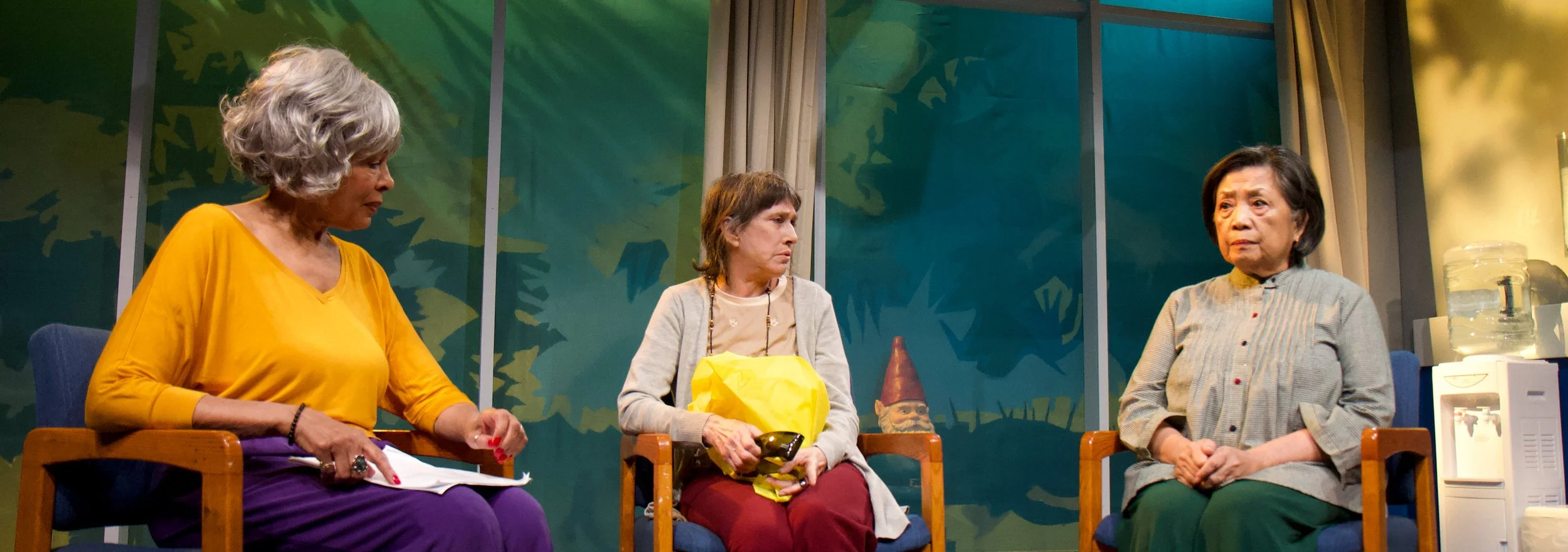Tennessee Williams is quite the popular playwright this season. Five by Tenn opened off Broadway in the fall, and The Glass Menagerie and A Streetcar Named Desire are currently enjoying runs on Broadway. Now at 59E59 Theaters, Linda Marlowe is starring in Mortal Ladies Possessed, a new work based on Williams's short stories. Perhaps the show's creators should have left those books on the shelf. The night begins with a door frame and a woman's personal effects strewn about a black box stage, and disembodied voices talking loudly and impatiently. Some character names and facts are thrown around, but it's tough to absorb this information out of context. Then Marlowe enters as the Widow Holly, patiently listening to the cacophony. There is silence, which the Widow Holly breaks with the sort of absurd personal statement that authors use to start their plays/books off with a laugh. (In this scenario, it does not have the desired effect.)
It turns out that she rents out rooms, and we see bits of the lives of the boarders at her New Orleans residence. Blackouts and the addition or subtraction of scarves and eyeglasses indicate changes of stories and characters. Since all of the tales are reminiscences, time is not linear, and in moments the characters jump from the near past to the faraway past to the present. But what makes perfect sense on the page, accompanied by character names and narrative directions, does not translate here to the stage.
Marlowe is a fine actress who speaks in a delightful girly rasp and commits fully to the physical and emotional presence of her characters. Her accent, though, does not play as effectively. The honey-coated drawl of Tennessee Williams's heroines is almost as iconic as the characters themselves, and certain expectations are inevitably formed. As Widow Holly, Marlowe spoke like an Australian who lived in New York for several years and then recently relocated to the South. There was no consistency, as if she was struggling to find the character's voice during her performance.
The only role in her repertoire here that needed no dialect coaching was Flora Goforth, the imperious owner of a Mediterranean villa. Marlowe was able to use an accent close to her own as she played up this deliciously vicious woman. This piece, in the middle of the set, was very funny, had an understandable story progression, and did not overstay its welcome. The same could not be said for its companion pieces.
A theatergoing audience appreciates it when the crafters of a show do not underestimate their intelligence, or their ability to interpret text and subtext. But when a production makes its audience work too hard to figure out who's who and what's what, oftentimes the audience stops trying. At the conclusion of Mortal Ladies Possessed, there was a hesitancy on the audience's part to clap, as they were not sure if they had, indeed, arrived at the end. All they, and this show, needed was a little more structure.






